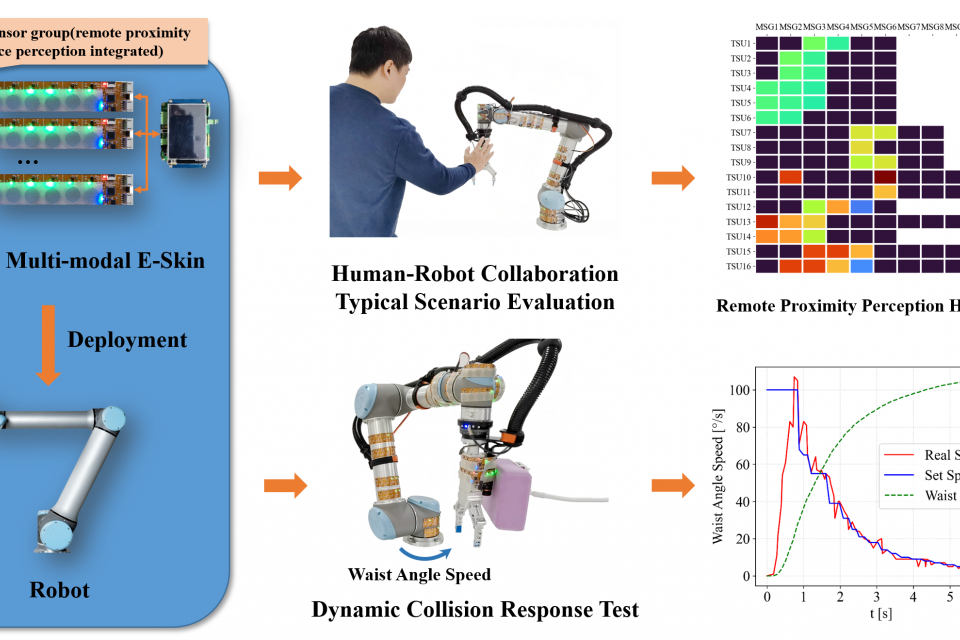Datasets
Standard Dataset
Large-area Modular Multi-mode Electronic Skin Integrating Remote Proximity and Contact Force Perception for Human-Robot Collaboration
- Citation Author(s):
- Submitted by:
- Xue Guangming
- Last updated:
- Sat, 01/28/2023 - 00:18
- DOI:
- 10.21227/77ps-cj20
- License:
 188 Views
188 Views- Categories:
- Keywords:
Abstract
Human-Robot Collaboration (HRC) is a significant research area in robotics, and the utilization of electronic skin technology is a promising approach to ensuring the safe operation of robots in Human-Robot Collaboration (HRC) environments. This study proposed a large-area deployable, modular, scalable and trimable, multi-modal, high-speed responsive electronic skin for robots that integrated remote proximity and contact force perception. The evaluation results demonstrated that the electronic skin could recognize the size, approximate distance, and direction of approaching objects, and could distinguish different typical HRC scenarios(the average scenario perception differentiation is 5.1). In the dynamic collision response test, the electronic skin detected the approaching object at a distance of about 60cm and was able to respond promptly even when the robot was moving at a high speed of 100°/s. Additionally, a simple collision speed control algorithm was proposed to achieve the robot's safety collision control in HRC environments.
This paper presents a large-area deployable Modular Multi-mode Electronic Skin (MMES) for robots and evaluates its collision perception capability in human-robot collaboration scenarios. The integrated remote proximity perception and contact force perception allow it to detect objects at a long distance and close contact. The modular, flexible, scalable and trimable design makes it more convenient for deployment on complex robot surfaces. And its distributed structure and unique three-layer data transmission network architecture provide high data processing and transmission speeds. The evaluation results indicate that the proposed electronic skin can perceive the size, approximate distance, and approach direction of approaching objects, and has a good ability to distinguish different typical human-robot collaboration scenarios and a high dynamic collision response speed. Accordingly, the MMES enables the realization of a highly scalable and reliable human-robot interface toward a variety of application human-robot collaboration scenarios, including collision perception, human-robot interaction, cooperative robots, etc.






